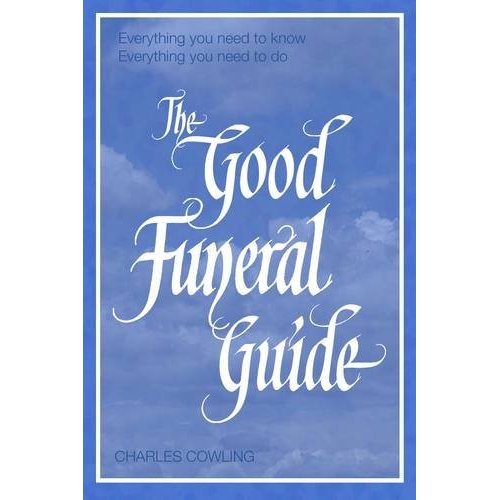That the natural burial movement began in the UK may be a source of pride if patriotism is your thing. That there are now more than 200 natural burial grounds in the UK compared with, say, around 20 in the USA, may serve to augment that pride. But if you could see some of the burial grounds in the UK that badge themselves as natural and where, you might conclude, the dead look as if they have been fly-tipped, your pride might shrink sharply. It might desert you entirely if you discovered that this nascent movement has already spawned two villains who have had to flee the country. Having considered the range of natural burial grounds, their locations, their avowed environmental purpose and their actual practices, you might find it very difficult to answer the simple question, What is natural burial?
The answer to that and a thousand other questions is answered in a timely new book, A Guide to Natural Burial. Because it is written by Ken West, the man who started it all, the only person employed in Bereavement Services ever to be awarded an OBE, it will do more than merely command respect.
Ken is much more moderate than me in his choice of vocabulary (except perhaps where he mentions Margaret Thatcher). Wherever his own feelings and preferences may lie in such matters as memorialisation, he is keen that natural burial should accommodate as many different tastes as possible so long as they can be accommodated in an environmentally principled way: “I accept that natural burial can be developed under different guises.” Though he sometimes records cases of unprincipled or simply incoherent practice, he does not dwell on them nor does he grow polemical. He prefers instead to accentuate the positive, look ahead and give natural buriers the knowledge and tools to get it right in the future; to do it well and thrive.
This is an important book because no one else is as well qualified to have written it. Ken has been burying people since he was a lad just out of school in 1961. As a lifelong local authority employee he has close on fifty years’ hands-on experience to draw on. As a balancer of budgets, he has thought long and hard about financial sustainability. As an environmentalist, he has thought urgently about ecological sustainability. He is the pioneer, the man who, against the odds, made it happen. He has mud on his boots, knowledge in his head and passion in his heart. He has everything to teach us.
For those who own and run natural burial grounds, this book will be the bible for years to come. Writing it must have been a herculean task. It covers absolutely everything: understanding the market, habitat creation, mowing, infrastructure, memorialisation, management, financial issues, planning issues, gravedigging and marketing. Each topic is dealt with in minutest detail. Ken covers all the nitty-gritty practicalities. In the hands of a natural burial ground owner, this book will become as thumbed and dogeared as any cook’s favourite recipe book.
Although much of what Ken writes about may be reckoned dry, I found even the driest parts compellingly interesting. The section on mowing is strangely unputdownable and Ken has a way of livening things up with personal reflections: “The English striped lawn has become a modern day icon representing the sheer absurdity of our relationship with nature.” The how-to section on gravedigging is similarly enthralling. I was especially pleased to read his exhortation to potential natural burial ground operators to “select a site containing fertile soil and to inter as shallow as possible … work to 24” (61 cm) depth of soil over the coffin.” I was interested to learn that he assumes that re-use of graves will have been legalised within 75 years.
He concludes by revisiting a cause dear to his heart, what he calls an “integrated funeral service,” a version of a scheme he initiated at Carlisle whereby the local authority contracted with a local funeral director to provide a lowest-possible-cost funeral. It came apart when the contracted funeral director subverted the spirit of the arrangement by upselling coffins. In this evolved version, Ken suggests that natural burial grounds might act also as funeral directors: “With minimal staff, no need for a hearse … reduced road travel and dual use of site staff and their offices, overheads are kept to a minimum.” This would ensure that “the total funeral income is retained by the natural burial site, and not shared with a conventional funeral director.” This is unlikely to endear him to the Dismal Trade, but it shows you that he has written this book as much with his head as with his heart. Ken has a strong sense of social responsibility.
This is a dense work which I defy to you to devour in a single sitting. And it fulfils its purpose: to inform anyone wanting to understand the funeral market; anyone wanting to understand the commercial, environmental and social impact of funerals; and those wanting to take control of their own funeral arrangements.
At an economics-driven £39.50 it’s by no means a low-cost option. Except that it’s not an option. It’s the only one there is.

